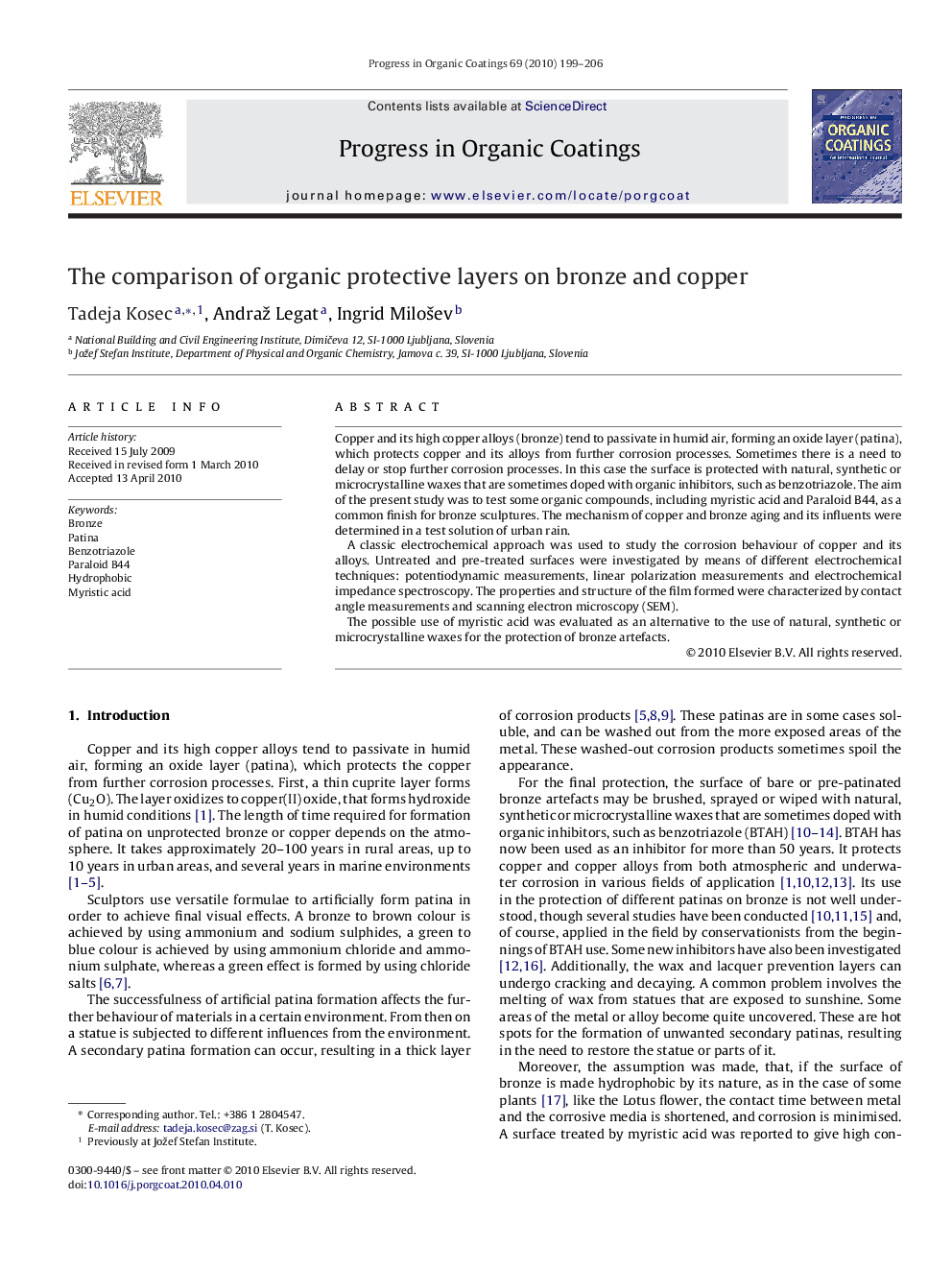| Article ID | Journal | Published Year | Pages | File Type |
|---|---|---|---|---|
| 693638 | Progress in Organic Coatings | 2010 | 8 Pages |
Copper and its high copper alloys (bronze) tend to passivate in humid air, forming an oxide layer (patina), which protects copper and its alloys from further corrosion processes. Sometimes there is a need to delay or stop further corrosion processes. In this case the surface is protected with natural, synthetic or microcrystalline waxes that are sometimes doped with organic inhibitors, such as benzotriazole. The aim of the present study was to test some organic compounds, including myristic acid and Paraloid B44, as a common finish for bronze sculptures. The mechanism of copper and bronze aging and its influents were determined in a test solution of urban rain.A classic electrochemical approach was used to study the corrosion behaviour of copper and its alloys. Untreated and pre-treated surfaces were investigated by means of different electrochemical techniques: potentiodynamic measurements, linear polarization measurements and electrochemical impedance spectroscopy. The properties and structure of the film formed were characterized by contact angle measurements and scanning electron microscopy (SEM).The possible use of myristic acid was evaluated as an alternative to the use of natural, synthetic or microcrystalline waxes for the protection of bronze artefacts.
